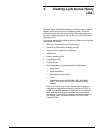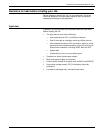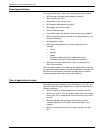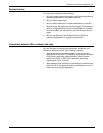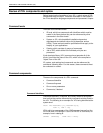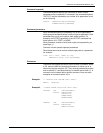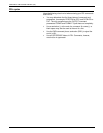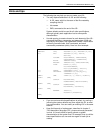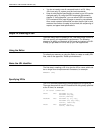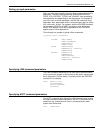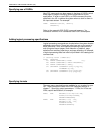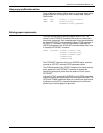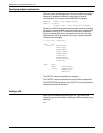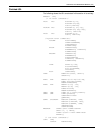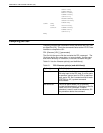
CREATING A JOB SOURCE LIBRARY (JSL)
XEROX DOCUPRINT 180 LPS PDL REFERENCE 3-9
Hints and tips
The following tips may help you as you create your JSL:
• The only required elements in a JSL are the following:
— A JDL name, which is the name of the file created by
compiling the JSL
— Job names
— END; command at the end of the JSL.
System defaults could be used for all other specifications,
although typically each application has its own specific
characteristics.
• Use tab spacing to create columns for each element of the JSL:
command identifiers, commands, and parameters. While not
required by the system, this organization makes it much easier
to identify command sets, their commands, and each
command’s parameters quickly. Here is a short example:
• If you are not sure which specifications to select, try running a
job using the system defaults and then adjust the JSL to meet
your requirements. You can modify an existing JSL in the same
manner.
• Keep the hierarchy of replacement, described in chapter 2,
“Print description language (PDL) components and processes,”
in mind. It is much easier to specify generic or global
characteristics at the system level, for example, than to call the
same specifications out over and over again for each job or
catalog.
SMPLST:
V1:
T1:
C1:
CME1:
JOB1:
JOB2:
JOB3:
END;
JDE;
JDE;
JDE;
JDL;
VFU
VOLUME
BLOCK
RECORD
LINE
TABLE
CRITERIA
CME
OUTPUT
OUTPUT
BANNER
ASSIGN=(1,5), ASSIGN=(2,10),
ASSIGN=(3,15), TOF=5,
BOF=66;
HOST=XEROX, LABEL=NONE,
CODE=EBCDIC, PLABEL=NO;
LENGTH=3990;
LENGTH=133, STRUCTURE=FB;
DATA=(1,132),
PCCTYPE=XEROX,
PCC=(0,NOTRAN), VFU=V1;
CONSTANT=(132) ’*’;
CONSTANT=(2,132,EQ,T1),
LINENUM=(1,5);
LINE=(9,-), POS=1, FONT=1;
DUPLEX=YES,
FORMS=BARS, MODIFY=CME1;
FORMS=NONE,
DUPLEX=NO, COPIES=2;
TEST=C1,
HCOUNT=1,TCOUNT=0;



